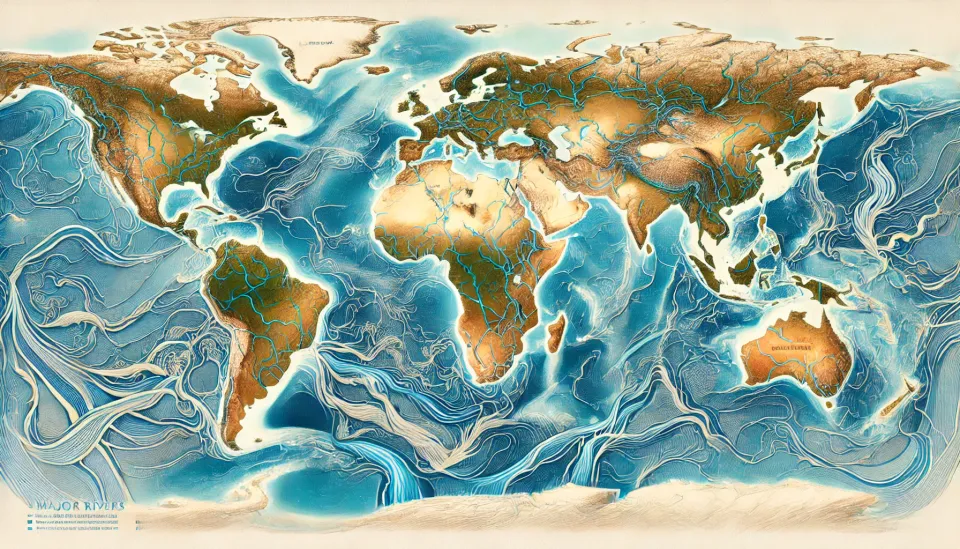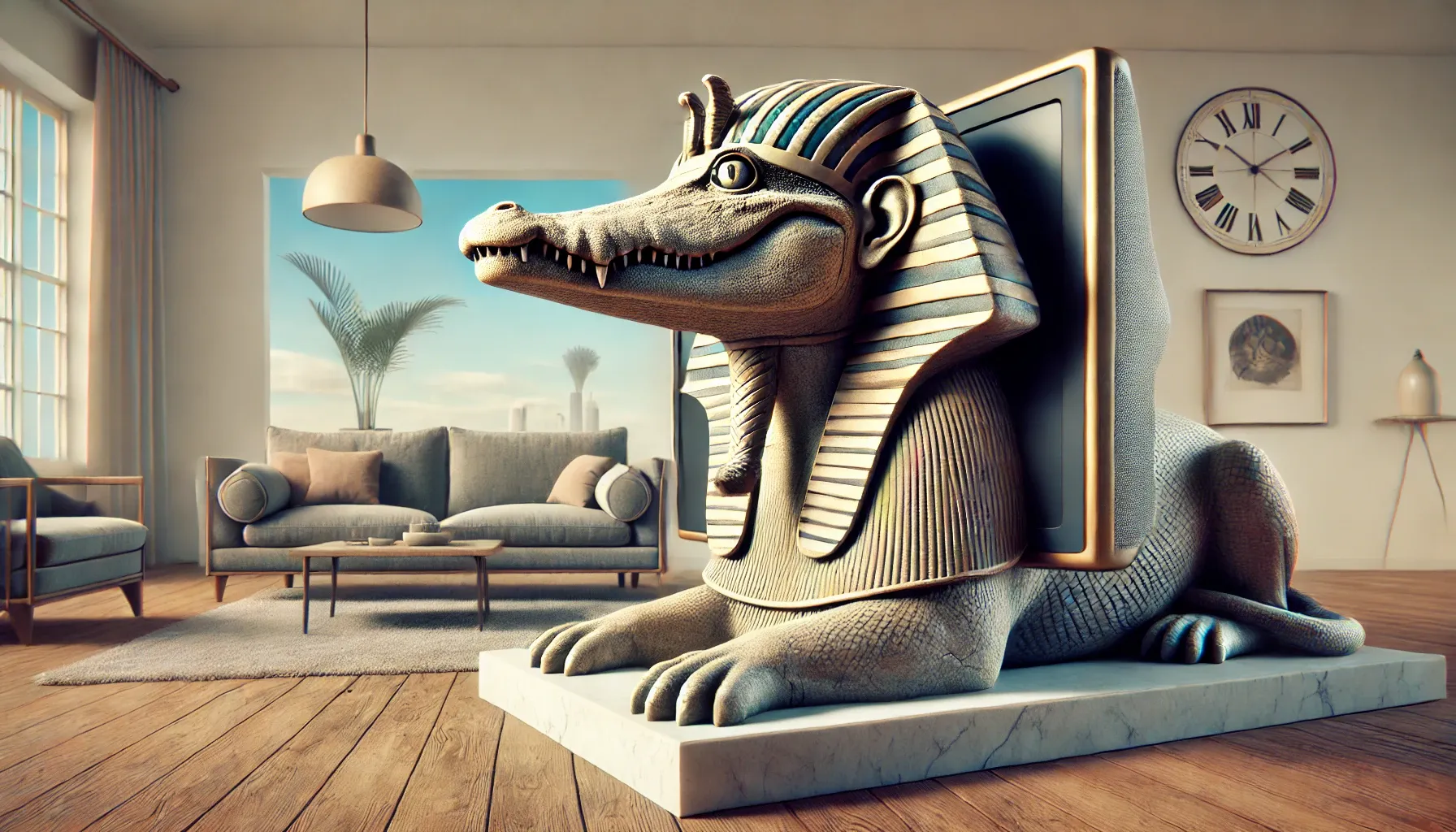Study and Memorize with the Memory Palace: Learning-by-doing

The Memory Palace is one of the most powerful mnemonic techniques available. With this tool, you can store large amounts of information in a structured way and recall it easily. The trick? Leverage familiar places and transform them into "containers" for data.
While many people have heard of the Memory Palace, few know how to use it effectively. In my previous article, I explained the basic principles along with an introductory example. However, there’s a big leap between understanding the basics and applying the technique in real situations, especially mastering it to study efficiently.
Today, I’ll teach you how to use the Memory Palace with a real case study: Learning, in order, the 15 longest rivers in the world along with their locations. Whether you’re solving a practical problem or simply enjoy learning interesting facts, this practical exercise will show you how to turn a tedious and boring memorization task into a creative and enjoyable experience.
Your Memory Palace
The Memory Palace involves imagining a place you know very well and dividing it into specific locations you’ll use to store information. Then, you create vivid, clear associations between what you want to remember and those locations. Your familiarity with the place makes it easier for your brain to retrieve the data when you need it. If you want to learn how to build your Memory Palace from scratch, I recommend reading my introductory article: The Memory Palace, or Loci Method.
For this example, I’ll use the first 15 locations of my palace, organized into three rooms:
Living Room (1 to 5):
1 - Door
2 - Television
3 - Lamp
4 - Coffee table
5 - Sofa
Kitchen (6 to 10):
6 - Dish cabinet
7 - Range hood
8 - Sink
9 - Refrigerator
10 - Microwave
Bathroom (11 to 15):
11 - Bathtub
12 - Toilet
13 - Washbasin
14 - Towel rack
15 - Trash can
Feel free to adapt these locations to a place that feels more familiar to you, like your own home or another well-known space. Think about your rooms and identify five distinctive items in each one to create your own palace. The key is to memorize it. This is a crucial step before moving on to the next part.
Memorizing the 15 Longest Rivers in the World with the Memory Palace
The Problem: Remembering an ordered List
According to (Wikipedia), these are the 15 longest rivers in the world and their primary locations:
- Amazon (7,062 km): Brazil.
- Nile (6,853 km): Egypt.
- Yangtze (6,300 km): China.
- Mississippi-Missouri (6,275 km): United States.
- Yenisei (5,539 km): Russia.
- Yellow River (Huang He) (5,464 km): China.
- Obi-Irtysh (5,410 km): Russia/Kazakhstan.
- Río de la Plata (4,880 km): Argentina.
- Mekong (4,880 km): Originates in the Himalayas (China) and flows into Vietnam.
- Congo (4,700 km): Democratic Republic of the Congo.
- Amur (4,444 km): Russia/China.
- Lena (4,400 km): Russia.
- Mackenzie–Slave–Peace–Finlay (4,241 km): Canada.
- Niger (4,200 km): Mali/Niger/Nigeria.
- Murray-Darling (3,672 km): Australia.
Does this list look easy to remember? Probably not. Would you remember which river (and its country) is in a specific ranking position, such as 12th? At first glance, it seems challenging.
The Solution: Associate Images with Each River and Place Them in the Palace
You have a list to memorize and a Memory Palace. Now, the task is to visualize the list items in a vivid way and distribute them across the palace locations. But… how do you turn each river and country into a memorable image?
Here’s the tricky part. It might seem impossible to convert these names into images, but it’s achievable: a little general knowledge to connect concepts, phonetic similarities to simplify recalling complex words, and a dash of imagination to turn each idea into a vivid and memorable image. Voilà!
- (Amazon/Brazil): The doorframe of the living room door is flanked by a giant Amazonian tree, with an anaconda hanging from its branches. The snake holds Brazil’s flag in its tail.
- (Nile/Egypt): Crossing the television, there’s a massive sphinx (evoking Egypt), but with a twist: it has a crocodile head, referencing the Nile’s crocodiles.
- (Yangtze/China): A Chinese dragon climbs the lamp, wearing a yin-yang pendant, with a tsetse fly perched on the pendant (playing with the phonetic similarity of "tse" in Yangtze).
- (Mississippi/United States): Mark Twain, associated with the Mississippi River, is sitting on a steamboat floating on the coffee table, wearing a suit adorned with stars and stripes.
- (Yenisei/Russia): Above the sofa there's a fight: a Japanese master ("sensei") with a bag of yen (phonetic association with "Yenisei") battles a Russian man trying to steal it.
- (Yellow River/China): Inside the dish cabinet, a completely yellow Chinese dragon dances in celebration, bumping into the cabinet walls.
- (Ob-Irtysh/Russia): Sitting atop the range hood, Obi-Wan Kenobi, wearing a traditional Russian hat, drinks Irish whiskey.
- (Río de la Plata/Argentina): The sink overflows with a river of silver, where an Argentine man with a mate dives enthusiastically.
- (Mekong/Himalayas-Vietnam): Inside the fridge, King Kong holds the Himalayas in one hand and a bag of rice (a staple in Vietnam) in the other.
- (Congo/D.R. Congo): Inside the microwave, a group of gorillas in a heated debate represents the Congo.
- (Amur/Russia-China): In the bathtub, a Siberian tiger (for Russia) wears a Chinese hat, with a heart-shaped pendant ("Amur" sounds like "amor").
- (Lena/Russia): Floating in the toilet, the iconic Lenna image sits inside a giant matryoshka doll (a Russian symbol).
- (Mackenzie–Slave–Peace–Finlay/Canada): In the washbasin, with his feet soaking wet because the faucet is running, there’s a hip-hop Master of Ceremonies (known as MCs, which phonetically recalls “Mackenzie”). He has a chain around his ankle (like a “Slave”), and a Peace symbol tattoo on his bare chest. He’s only wearing a towel tied around his waist, because he’s in a Finnish sauna (reminding you of “Finlay”), sweating profusely. The sauna bears a logo with the Canadian flag.
- (Niger/Mali-Niger-Nigeria): Hanging from the towel rack is a giant nickel battery (a phonetic connection to Niger and Nigeria), next to a bottle of Malibu (evoking Mali).
- (Murray-Darling/Australia): Inside the trash can, tennis player Andy Murray is playing a match against a kangaroo (an Australian icon) using a heart-shaped ball (for “Darling”).
Notice the details. Not only have I provided vivid visuals that, one way or another, remind you of the names you need to memorize (if you don’t know how to do this, learn to create memorable images here), but I’ve also linked them strikingly to the locations in the memory palace (crossing the television, climbing the lamp, in the washbasin with wet feet because the faucet is running...). This will make it much easier for you to recall the images when you think about the locations.

Of course, these are the visualizations I came up with, but any other image you think of is completely valid, as long as it helps you remember an item from the list.
Test Yourself
- Visualize each of the images in its location intensely.
- Try to recall the entire list mentally.
- Once you’ve done this, wait a few minutes and review the route again.
- Repeat the process after an hour, or a day. To your surprise, you should be able to remember everything.
Additionally, as I’ve already explained, one of the benefits of the Memory Palace is its ability to help you remember the order of items. Without reciting them all from memory, can you tell me: What is the third longest river? And the eighth? What about the 12th position in the ranking?
How to Practice and Strengthen Your Memory
- Visualize with detail: Focus on the images and walk through your palace several times.
- Spaced repetition: Review the route later in the day and in the following days to reinforce the connections.
- Analyze and fix your mistakes: If you forget any elements in the list, identify why. Was the image not vivid enough? Was it poorly integrated into its location? Fix what went wrong and memorize it again.
Conclusion
Congratulations! You’ve taken a huge step toward mastering the Memory Palace. This technique can be applied to any list you need to remember or any concept you have to study, but it requires practice to use it fluently.
The next time you need to study or memorize a difficult list—whether it’s bones, country rankings, presidents, or the sections of a presentation—remember that your palace is ready for use. Practice and continue unlocking the power of your memory!
On your journey to a better memory, you can count on me, the Memory Geek, to unlock Your Memory Power, One Technique at a Time!